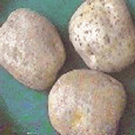Response of Potato Tuber Cell Division and Growth to Shade and Elevated CO2

Sources, sinks and cells
According to Barbara McClintock, the problem with studying bits of nature is that we come to understand nature only in bits: we can too easily miss interactions and connections between different events. However, this is not a trap that Chen and Setter of Cornell University (pp. 373-381) fall into. They have studied the relationship between rate of photosynthesis and tuber growth in potato. Tubers are initiated on underground stems at localized foci of dividing cells originating from the cambium. The cells expand and many of them undergo several extra rounds of DNA replication in the absence of cell division. This DNA endoreduplication occurs in many storage organs and may be associated with the formation of large cells. When photosynthetic rates were enhanced by elevating the CO2 concentration, the rate of accumulation of cells during initiation increased markedly. This led to an increased cell number at the tuber bulking stage. However, there was no increase in the proportion of cells undergoing DNA endoreduplication nor in average cell volume. Decreasing the rate of photosynthesis by shading led to a decrease in the rate of cell accumulation at initiation and decreased cell numbers during tuber bulking. However, there was an increase in cell volume during bulking but with little effect on endoreduplication. Thus, the control of cell proliferation via complete cell cycles is much more sensitive to changes in source activity than is endoreduplication. This provides clues about the points at which photosynthate may interact with cell cycle regulatory mechanisms. Concerning the signalling mechanism, the authors have evidence that glucose may be involved. They suggest that glucose concentration may be regulated by acid invertase located in the tuber-initiating cambium: invertase activity goes up when the rate of photosynthesis increases, and goes down when photosynthetic rate drops. There is clearly further exciting research to come from the Cornell lab.
University of Exeter, UK
j.a.bryant{at}exeter.ac.uk